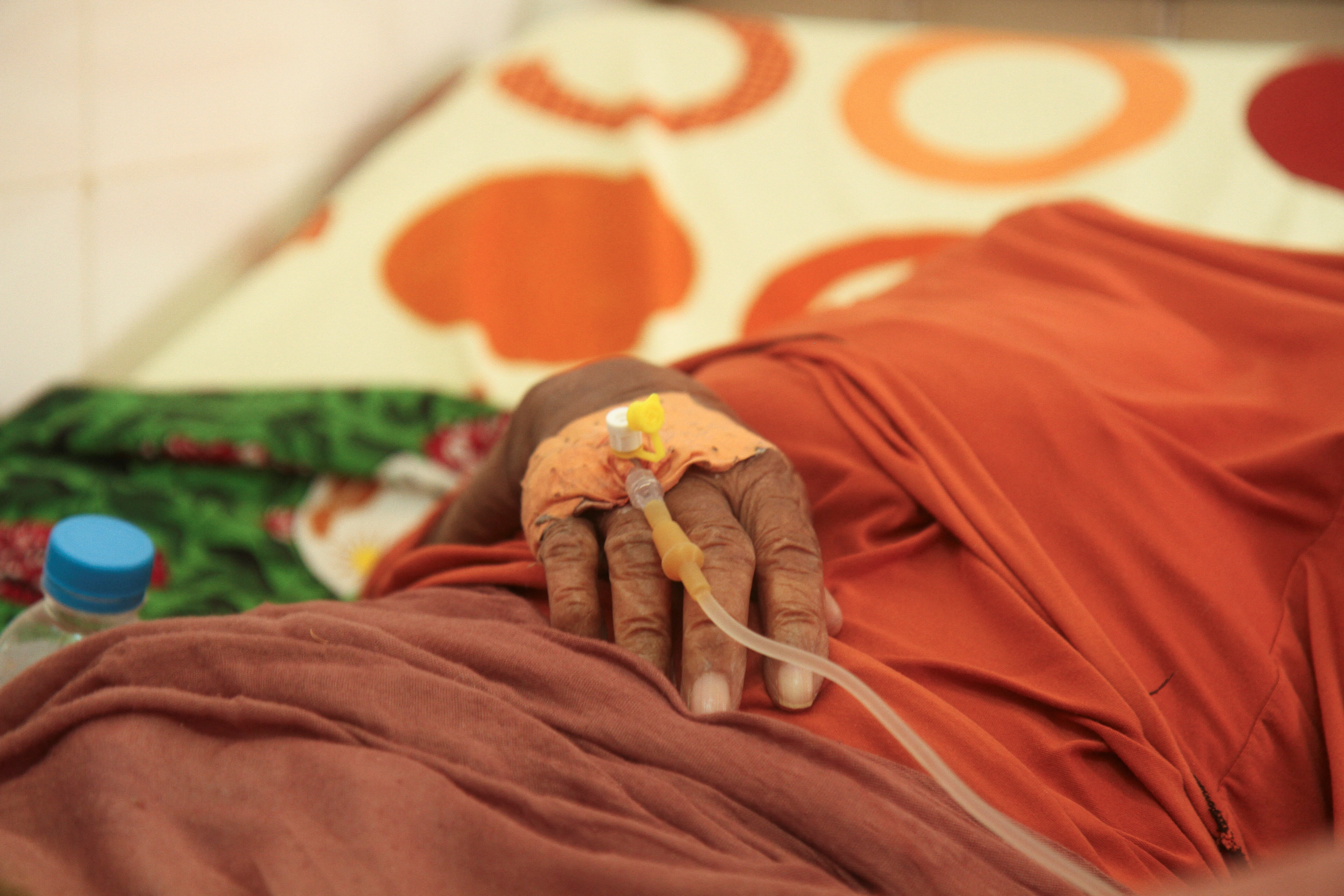These are the 7 most common long COVID symptoms to look out for
New data is providing scientists with a better understanding of how the SARS-CoV-2 virus mutates.
Image: Unsplash/ Heike Trautmann

Explore and monitor how COVID-19 is affecting economies, industries and global issues
Stay up to date:
COVID-19
- Many people who suffer with long COVID are susceptible to developing seven health symptoms including chest pain, joint pain, and obesity.
- Researchers selected the 47 most commonly reported health symptoms from long COVID to examine for a study.
- The results could benefit researchers examining other aspects of COVID-19, such as the impact of the virus on the brain or the immune system.
People experiencing long-lasting effects from COVID-19—known as “long COVID” or post-COVID conditions—are susceptible to developing only seven health symptoms for up to a year following the infection.
They are: fast-beating heart, hair loss, fatigue, chest pain, shortness of breath, joint pain, and obesity.
To develop their findings, researchers reviewed Oracle Cerner real-world data from electronic medical records containing de-identified information for medical research purposes.
After examining data from a total of 52,461 patients at 122 health care facilities across the United States, the researchers selected the top 47 most commonly reported health symptoms from long COVID to examine for the study.
Then, the researchers looked for any comparisons in the reported health symptoms—many also shared by other viral respiratory infections—among people in three different subgroups:
- People diagnosed with COVID-19 but do not have any common viral respiratory infections like influenza or pneumonia.
- People with common viral respiratory infections but do not have COVID-19.
- People who do not have COVID-19 or any other common viral respiratory infections.
“Despite an overwhelming number of long COVID symptoms previously reported by other studies, we only found a few symptoms specifically related to an infection from SARS-CoV-2, the virus that causes COVID-19,” says Chi-Ren Shyu, director of the University of Missouri Institute for Data Science and Informatics and corresponding author of the study, published in Open Forum Infectious Diseases.
“Before we examined the data, I thought we would find an ample amount of the symptoms to be specifically associated with long COVID, but that wasn’t the case.”
Shyu, who is also a professor in the electrical engineering and computer science department, says the results could benefit ongoing efforts by fellow researchers to study various impacts of COVID-19.
“Now, researchers will be able to better understand how SARS-CoV-2 may mutate or evolve by creating new connections that we may not have known about before,” Shyu says. “Going forward we can use electronic medical records to quickly detect subgroups of patients who may have these long-term health conditions.”
The findings will give health care providers much-needed information about what to ask and look for when visiting with a patient who has symptoms of long COVID, says coauthor Adnan Qureshi, a professor of neurology in the School of Medicine, and doctor of neurology with MU Health Care.
Qureshi says the study’s results could also benefit researchers examining other aspects of COVID-19, such as the impact of the virus on the brain or the immune system. He says the concept of long COVID was developed after clinicians started noticing a group of people who were dubbed “survivors” of COVID-19 were “not necessarily normal anymore.”
“The survivors still have symptoms that are at times disabling and preventing them from going back to work or the activities of their daily life,” Qureshi says.
“This is not because the COVID-19 infection is still active, but instead the infection has caused long-term consequences, or sequelae, in the form of a post-COVID syndrome that could persist for months or even years. Our research was able to identify long-term sequelae that are distinctive to COVID-19 and separate the post-COVID syndrome from other post-viral syndromes.”
Additional coauthors are from the University of Minnesota and the University of Missouri.
The National Institutes of Health supported the work. The content is solely the responsibility of the authors and does not necessarily represent the official views of the funding agencies.
Source: University of Missouri
Accept our marketing cookies to access this content.
These cookies are currently disabled in your browser.
What is the World Economic Forum doing to manage emerging risks from COVID-19?
Accept our marketing cookies to access this content.
These cookies are currently disabled in your browser.
Don't miss any update on this topic
Create a free account and access your personalized content collection with our latest publications and analyses.
License and Republishing
World Economic Forum articles may be republished in accordance with the Creative Commons Attribution-NonCommercial-NoDerivatives 4.0 International Public License, and in accordance with our Terms of Use.
The views expressed in this article are those of the author alone and not the World Economic Forum.
Forum Stories newsletter
Bringing you weekly curated insights and analysis on the global issues that matter.
More on Health and Healthcare SystemsSee all
Felipe Basso
November 13, 2025
James See
November 7, 2025
Shyam Bishen
November 5, 2025







